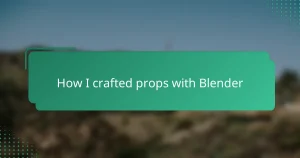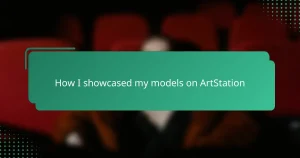Key takeaways
- Sci-fi prop modeling involves balancing realism and creativity, allowing for the exploration of unique and futuristic designs.
- 3DS Max’s powerful tools, such as the Editable Poly and TurboSmooth modifiers, enable precise modeling and the creation of organic, believable characters.
- Layering textures and incorporating subtle asymmetries enhance character realism, making them feel alive and relatable in sci-fi environments.
- Effective lighting techniques play a crucial role in showcasing character details, enhancing perceived depth and form.
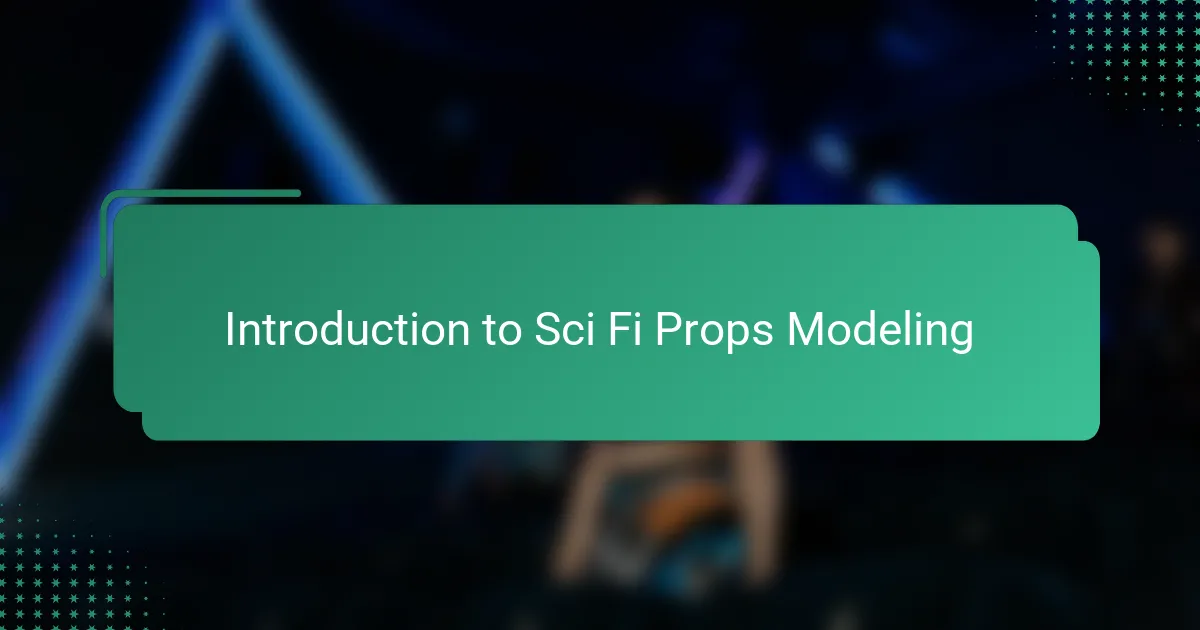
Introduction to Sci Fi Props Modeling
Modeling sci-fi props has always fascinated me because it allows me to bring otherworldly concepts to life. In the realm of imagination, props aren’t just objects—they’re gateways to new stories and universes. Have you ever wondered what it takes to create something that feels both futuristic and believable?
When I first started working with 3DS Max, the challenge was capturing the delicate balance between realism and creativity. Sci-fi props demand intricate details that convince the viewer they belong in advanced, often alien, technologies. The process taught me patience and how to translate abstract ideas into tangible forms.
What excites me most about sci-fi prop modeling is the endless possibilities. Every curve, texture, and element adds to the narrative, making each piece unique. It’s like sculpting a tiny piece of the future, which is as thrilling as it sounds.
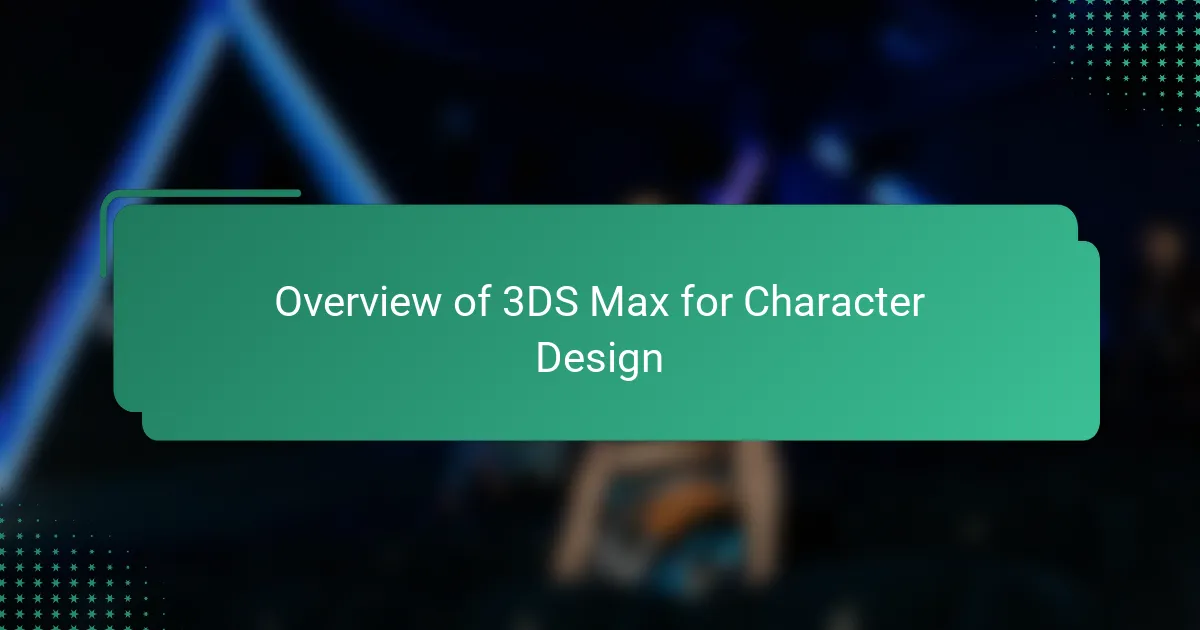
Overview of 3DS Max for Character Design
When I dove into character design using 3DS Max, I quickly realized how powerful its toolset truly is. The software offers a remarkable range of modeling options, from box modeling to advanced polygon editing, which gave me the flexibility to shape characters exactly as I envisioned them. Have you ever felt limited by a program that restricts your creative freedom? 3DS Max definitely isn’t one of those.
One feature I found especially helpful is the modifier stack, which lets me non-destructively tweak and refine my models at any stage. This saved me countless hours because I didn’t have to start over every time I wanted to adjust proportions or details. From my experience, this layered approach encourages experimentation, which is crucial when designing characters that need to look believable in sci-fi worlds.
Another aspect that stood out to me was the integration of 3DS Max’s sculpting tools alongside its traditional modeling techniques. It allowed me to add organic details and subtle asymmetries, making each character feel more alive and realistic. For me, those tiny imperfections make all the difference because they transform a digital creation into a character that viewers can connect with emotionally.

Essential Tools for Modeling Characters
One of the essential tools I rely on in 3DS Max is the Editable Poly modifier. It gives me granular control over vertices, edges, and faces, turning rough shapes into detailed characters. Have you ever tried to shape a model only to feel stuck? This tool helped me break through those creative barriers by letting me sculpt with precision.
Another favorite is the TurboSmooth modifier, which smooths out the geometry and transforms blocky forms into sleek, organic shapes. Early on, I underestimated its power until I saw how it brought subtle curvature to my characters, making them look naturally alive rather than robotic. It’s like giving your model a second skin—softening edges without losing structure.
I also can’t stress enough the importance of using Reference Image Planes in the viewport. At first, I thought I could model purely from imagination, but reality hit me when proportions felt off. Placing concept art or sketches directly in the scene helped me stay true to my vision and maintain consistency. It’s a simple trick, but it completely changed how accurately I could build my characters.
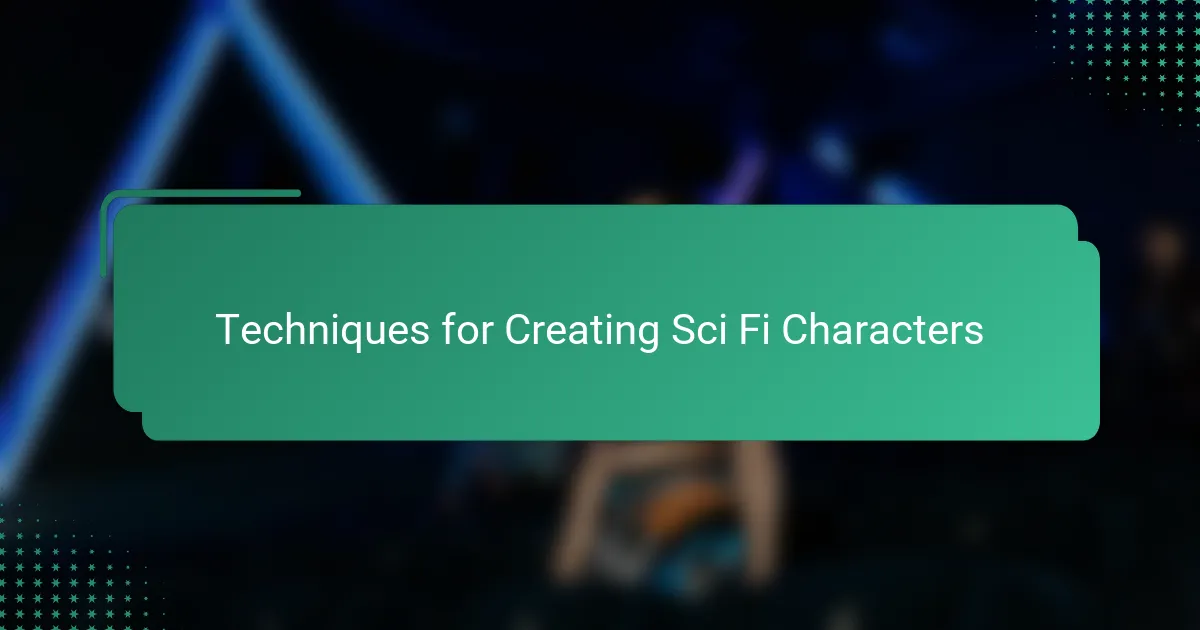
Techniques for Creating Sci Fi Characters
When it comes to crafting sci-fi characters in 3DS Max, I found that blending hard-surface modeling with organic sculpting is key. Have you ever noticed how truly captivating characters often have a mix of sleek mechanical parts and subtle, lifelike details? Using tools like the Editable Poly for crisp edges alongside sculpting modifiers helped me achieve that perfect hybrid look.
Another technique that reshaped my workflow was leveraging symmetry early on, then deliberately breaking it later to add character. It might sound counterintuitive, but those small asymmetries breathe life into my models, making them feel less like cold machines and more like beings with history. It’s a fine line, but experimenting with symmetry toggles in 3DS Max really made a difference.
Lastly, I can’t stress enough how layering textures and materials opens up endless possibilities. Simply relying on geometry isn’t enough—subtle surface details, from metal scratches to bio-organic patterns, tell a story on their own. Have you ever zoomed in on a character only to discover textures that hint at its origin or function? Adding those nuances became my favorite part of the process.
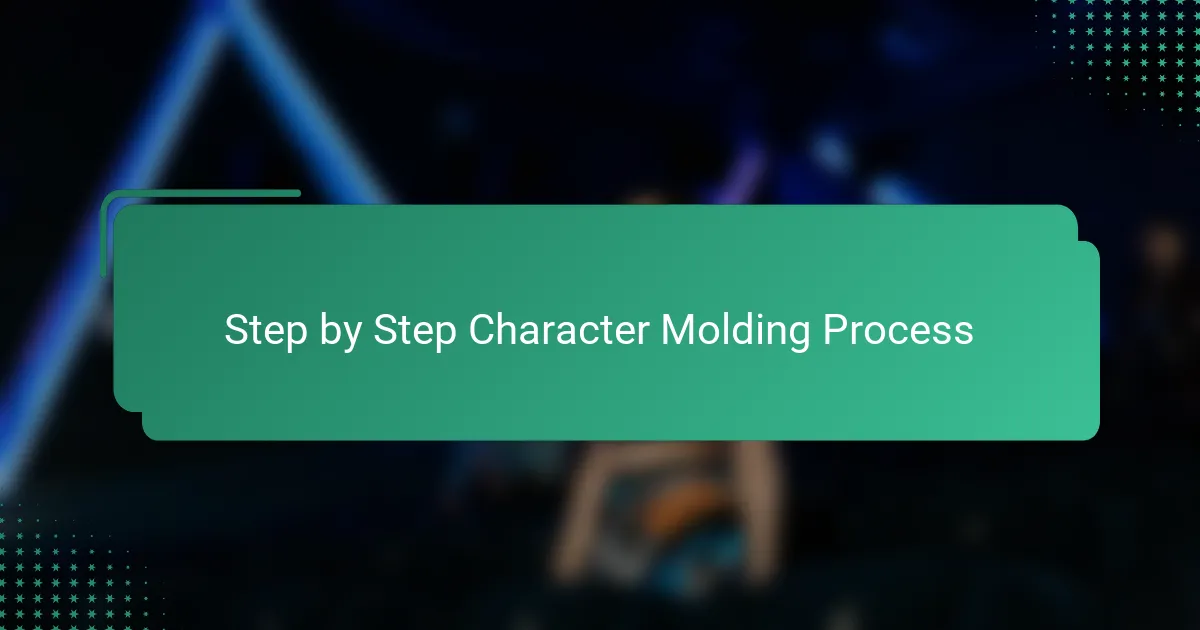
Step by Step Character Molding Process
The first step I always take is blocking out the basic form using simple primitives in 3DS Max. Have you ever tried starting too detailed too soon? I learned the hard way that nailing the overall silhouette early on saves so much rework later. It’s like laying the foundation before building a house—you want it solid and proportionate.
Next, I dive into refining the mesh with the Editable Poly modifier, carefully adjusting vertices and edges to sculpt more detailed anatomy or mechanical parts. This stage feels like breathing life into my character, where rough shapes start to reveal personality. Sometimes, I get lost in tweaking tiny details, but that’s where the magic really happens.
Finally, smoothing and adding asymmetry is crucial. Using TurboSmooth helps me create natural curves, but I always make sure to introduce slight imperfections to avoid robotic stiffness. Do you think perfect symmetry makes characters believable? From my experience, breaking symmetry subtly makes them feel more alive and compelling, which is essential for sci-fi creatures and humanoids alike.

Common Challenges and Solutions
One challenge I often faced was managing complex topology without overwhelming my system or myself. Have you ever caught yourself staring at a dense mesh, wondering if you’ll ever tame it? I found that strategically using layers and isolating parts during modeling made the process far more manageable, preventing frustration and keeping the creative flow uninterrupted.
Another hurdle came from balancing detail with performance—too much geometry can slow down rendering and editing. Early on, I struggled to find the sweet spot between intricate designs and practical polygon counts. The solution? Using modifiers like TurboSmooth sparingly and relying on normal maps to simulate fine surface details without taxing the system. This approach kept my workflow smooth and my characters looking impressive.
Lastly, getting proportions right was a persistent challenge. Even with reference images, some elements just felt off during the early phases. I learned that constant iteration, combined with feedback loops—sometimes stepping away for a moment and returning with fresh eyes—helped me spot subtle mistakes. It’s amazing how a few small tweaks bring a character from awkward to believable, don’t you think?
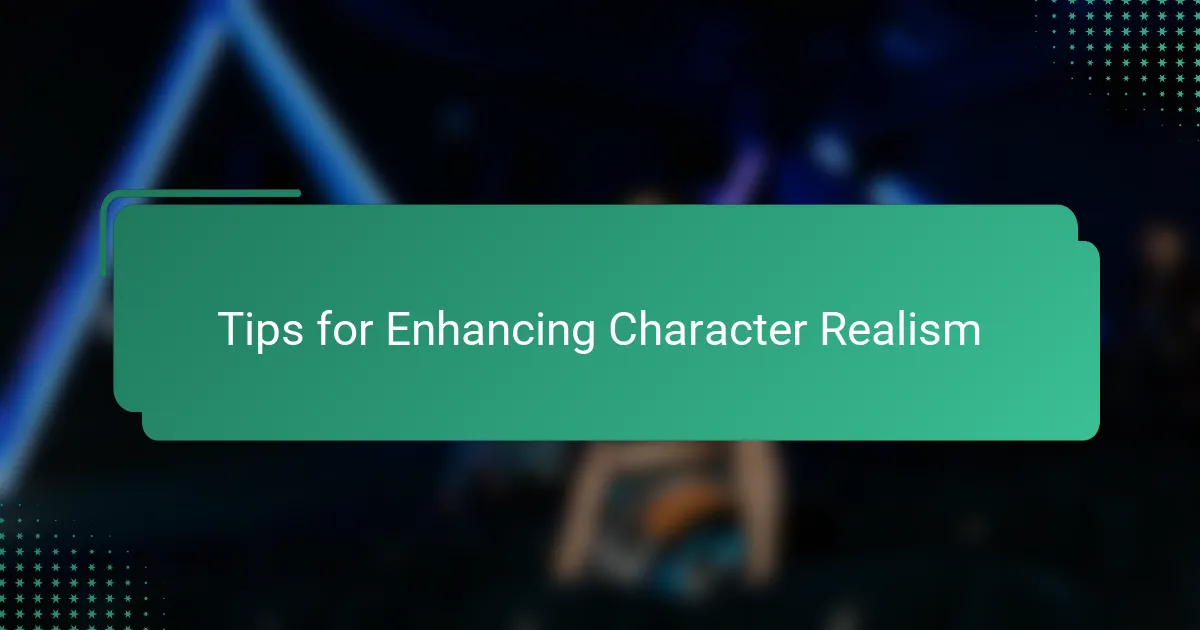
Tips for Enhancing Character Realism
One tip that truly changed how I enhance character realism is focusing on subtle asymmetry. Have you ever noticed that the most believable characters aren’t perfectly symmetrical? Early in my modeling journey, I struggled with this because symmetry felt “cleaner,” but introducing tiny imperfections made my characters jump off the screen.
Another crucial insight I gained was the power of layered textures combined with bump and normal maps. It’s amazing how adding microscopic surface details—like scratches or pores—can trick the eye into perceiving depth without increasing polygon counts. From my experience, these details breathe life into sci-fi characters, making them feel tactile rather than flat.
Finally, the way lighting interacts with your model can’t be overlooked. I learned that positioning lights to highlight contours and shadows reveals a character’s form in a way raw geometry alone never could. Have you ever adjusted lighting and suddenly saw your character come alive? That moment is why I always treat lighting as a key part of enhancing realism.

